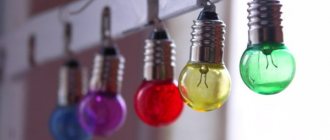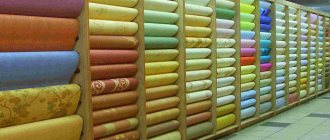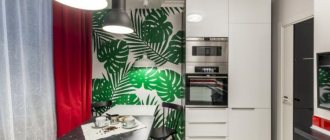The lighting of a room creates its atmosphere and regulates the emotional mood of its owners and guests. This way you can create a work room, or vice versa, a relaxation area. To decorate a space, lighting of different colors is often used, but its price is much higher than the price of standard lighting fixtures. Because of this, you need to learn how to paint the light bulb yourself.
Why paint a light bulb?
Before choosing what to paint a light bulb with, you should clarify whether the method is suitable for achieving your original goals. Painting lighting fixtures is usually becoming an alternative to purchasing ready-made elements. Colored dyes are most often used for:
- Eliminating their possible theft at the entrance. They are usually stolen for further resale or use at home, but lamps painted in a different shade or darkened are not suitable for this. This reduces the risk of theft of lighting in the house.
- Creation of light music. Using lamps of different colors will help create an unusual atmosphere in the house, which is suitable for creating home parties and discos.
- Zoning of space. You can use different shades to highlight or emphasize different areas in the apartment. The paint used for light bulbs is not bright, but muted tones are suitable for changing the color scheme of the room.
- Decoration of rooms. Creating small illumination of shelves or other elements can be done by changing the color of the lighting, which usually looks impressive.
Instead of painting the light bulbs yourself, you can buy ready-made devices. However, keep in mind that their prices vary greatly - with home painting you can save up to 60 percent of the price. In addition, you can choose an unusual color scheme, which is not always available ready-made. The initial goals for coloring a light bulb may be different, but keep in mind that if the dye is used correctly, it does not lose its technical characteristics, which is why it can be used for regular room lighting, even after repainting it red. This is interesting: painting organic glass.
Example of using colored light bulbs
What does pink or purple light in windows mean?
If at night pink light is visible in one of the windows, this means that there are plants on the windowsill that do not get enough ultraviolet radiation during the day. Before the advent of phytolamps, colored lampshades were used for these purposes. But they are not as effective as modern devices. With their help, you can grow not only flowers, but also seedlings on the windowsill.
Fig. 1 – violet light in the windows.
Previously, special powerful incandescent lamps were installed for these purposes. As a result, I had to pay high electricity bills and sleep under bright lights all night. Such devices also had a detrimental effect on plants. If the leaves were tender, burns appeared on them.
Possible problems
Before changing the color scheme of the device at home, keep in mind that the lamp gets very hot during operation. This becomes the main problem when repainting. When using conventional pigments that are not intended for use under high temperatures, the coating quickly dries out and cracks. This is reflected in the deterioration of the visual result, and in the possible overheating of the light bulb when the dye melts. The heating of a light bulb depends on its characteristics:
- A light bulb with a capacity of 25 W and energy saving heats up to 100 degrees Celsius;
- Capacity 40 W – 150 degrees;
- Capacity 75 W – 250 degrees;
- Halogen lamp, capacity 275 W – up to 550 degrees;
- LED – up to 50 degrees.
Please note: Drying time for acrylic paints
The less the lamp heats up, the easier it is to repaint it, obtaining a lasting result. However, with halogen lamps it is much more difficult - due to the high heating temperature, almost no product lasts more than half an hour on them in the same state. But the plastic base of the LED lamp practically does not heat up - only the power source, which is located in its base, heats up. No paint is applied to it, so this type is most convenient to use for painting.
Damage to paint due to overheating
Cracking paint
Features of the painting object and working with it
When switched on, the bulbs heat up quickly and cool down when switched off. The degree of heating depends on the design and type of lamp. This circumstance must be taken into account when choosing a material for painting. The dye must withstand sudden temperature fluctuations and many hours of exposure to heat.
Requirements for such paints:
- high heat resistance (withstands high temperatures and sudden changes that occur when the lamp is turned on and off);
- abrasion resistance (does not crumble when touched);
- safety (does not release toxic or strong-smelling substances when heated);
- transparency (does not interfere with outgoing light).
How to paint
To change the color of a light bulb and then use it as before, you need to pay attention to the choice of dye. Regular paint is not suitable for this, since immediately after heating it will begin to melt, dry out, crack and deteriorate. The consequences of using regular paint can be dangerous. To choose a pigment, you should consider what color you want the light bulb to be. This way you will select a composition that will evenly cover the glass, preventing damage to the result.
Nail polish
Nail polish is often used to color light bulbs. The main advantage of the compositions is the number of shades. You can even paint the lighting fixture green, or create a smooth gradient of shades, which will allow you to decorate your apartment. There are other positive aspects of using varnishes:
- Good adhesion. It is tightly applied to the surface, preventing the formation of smudges, chips, and cracks when heated;
- Withstands heating up to two hundred degrees Celsius;
- When applied in a dense layer, it looks evenly and does not form unevenness on the surface, which is then reflected in the emitted light.
However, keep in mind that when using lamps that heat up more than two hundred degrees, the varnish begins to melt and flow. It can also be used as a base if you use clear varnish. Due to its good adhesion, it allows the effective use of other dyes.
Nail polish
Ballpoint pen paste
If you need to paint a lamp blue, this option is most often used. It is simple, since you do not need to buy additional materials and compositions - a ballpoint pen is always available in any home. Using a pen as a dye is not difficult:
- First, unscrew the tube by removing the metal ball from the tip to allow the paste to flow out;
- Blow on one side of the paste, tilting the other side towards a piece of paper or small container. Gradually blow all the dye out of the tube;
- Grab the light bulb by the base, using the brush to spread the colorant over the surface.
- You can additionally apply a second layer of composition after the first has dried.
Pay attention to: Primer for wood for painting: description, types, application
You can pre-dilute the paste in a small amount of acetone. After this, it will be more convenient to apply the paint, but the liquid composition is poorly distributed over the glass surface of the light bulb.
Ballpoint pen paste
Tsaponlak
The standard purpose of the composition is to coat internal parts and elements to protect them from overheating and short circuits in the board. Since the mechanisms in the radio can heat up to 150 degrees Celsius, varnish can be used at about 150-200 degrees, due to its increased heat resistance. To mark internal elements, there is a composition of different shades, so you can even paint the lamp yellow. However, if you only have clear varnish, you can use it as a base by adding dye from the previous method - ballpoint pen paste. The composition will be evenly applied to the surface, maintaining heat-resistant properties.
Tsaponlak
PVA
You can use regular PVA glue as a solution to apply to the surface of the lighting fixture. However, keep in mind that after drying, it retains its previous state only when heated to one hundred and fifty degrees. Excessive overheating will cause the composition to melt. Before using PVA, you can coat the surface with a clear varnish for increased adhesion. However, keep in mind that when using regular PVA, it becomes transparent after drying. To color the lamp red or other shades, you can add two to three drops of ordinary water-soluble dye to the glue. This will allow you to achieve a dense repainting of the glass in a different color scheme, preventing uneven coverage. The principle of applying glue is standard - there is no need to prepare the base. After adding pigment to it, mix the mixture and apply in one or two layers with a brush. You can simply dip the lamp in the solution, holding it by the base.
PVA glue
Automotive enamel
You can use car enamel for painting, but you need to keep in mind that it is applied in a thick layer to cover scratches on the car, so you should use the spray can carefully. Not all lamps can be used with auto enamel. The maximum degree of heating that will not lead to melting of the composition is two hundred degrees. The solution is applied at a distance of about forty centimeters in small doses. It is worth applying the composition in one layer, since it has a dense consistency, which implies complete covering of the glass when it is redistributed. The main advantage of auto enamel for its use for decoration is the range of shades. You can choose almost any color, as it implies a means of application to the car body.
Car varnish
Organosilicon
Organosilicon is suitable for excessive heating of the lamp. Withstands the product on surfaces up to six hundred degrees Celsius. To use, you must first dilute the product with a solvent and then distribute it evenly over the surface of the glass. However, keep in mind that most often a transparent product is applied as protection to the base, and after hardening it is covered with a standard dye.
Heat resistant paint
Stained glass paints
Not all types of compounds are suitable for painting. Water-soluble pigments intended for firing should be used. They can withstand any degree of heating of glass, having the main advantage - when heated, their strength only increases. The only thing to consider before using pigment is the high price. A small tube (50 ml) costs about three hundred rubles. This is interesting: stained glass painting.
Stained glass paints
Solutions
Regular paint is not suitable for painting a lamp. Still, there are a number of solutions that can help solve the problem.
Ballpoint pen paste
To make a light bulb, for example, blue, you can use regular ballpoint pen paste.
You can do this as follows:
- Remove the tip containing the ball from the rod.
- Blow out the rod. This will help you extract the paste onto a paper sheet.
- Hold the lamp by the base and rub the paste onto the bulb.
In one of the Soviet technical magazines, the following method was proposed: dilute the paste in acetone, and apply the resulting liquid to the flask with a brush. This option is good because it allows you to control the saturation of the paint. However, keep in mind that liquid paint is difficult to apply on a smooth glass surface.
Advice! Instead of acetone, you can use other types of solvents (cologne or ethyl alcohol).
The light bulb can be painted using regular quick-drying nail polish. However, it should be remembered that the varnish can withstand temperatures up to 200 degrees, and then it begins to flow.
Method 3 - PVA glue
For cooking you need to prepare the following items:
- PVA glue;
- ink for inkjet printers, or other water-soluble inks;
- shallow container;
- brush.
Important! Can only be used on moderately hot elements.
Preparing the paint:
- Pour glue into a container.
- Add coloring pigment in a 1:1 ratio (50 ml of glue requires 50 ml of paint).
- Mix well with a brush.
- Apply to the light bulb and dry.
Important! Prepare separately all the necessary shades so that you can paint the light bulbs blue, red, green or any other color.
Which means are not suitable?
Not all dyes are suitable for coloring a simple light bulb. The complete list of products that cannot be used for coloring depends on the specific purposes. To obtain the most attractive decorative result, it is necessary to use stable, heat-resistant stained glass paints, silicone or tsaponlac. To quickly create an anti-vandal lamp, paste from a pen is suitable.
Zelenka
Almost every person has a solution of brilliant green in their first aid kit. It is not recommended to use it for coloring, since it is not resistant to high temperatures, wears off quickly and does not allow for uniform darkening. When applied in a thick layer, the brilliant green darkens the glass too much, which is why the lamp ceases to fulfill its main task - illuminating the room.
Markers and felt-tip pens
It is extremely difficult to paint the entire surface of the glass with felt-tip pens and markers. In addition, they are extremely easy to wipe off the surface after application. Even alcohol-based markers can be removed from glass at the slightest touch. That is why coloring with felt-tip pens is not done when working with any lamps.
Difficulties in painting at home
Among the main problems of dyeing at home are:
- difficulties in selecting a dye for a specific lamp;
- inability to properly treat the surface before painting;
- lack of specialized tools.
If you don’t have the desire or free time to study the nuances of painting, then you can simply purchase a ready-made painted lamp in a store. To choose the right paint, you need to familiarize yourself with the table of lamp temperatures depending on the type and power:
| Type | Surface temperature |
| Incandescent lamp, 25 watt | 100 C |
| Incandescent light bulb, 75 watt | 250 C |
| Energy saving | 100 C |
| LED | 40-50 C |
High-power halogen lamps have the highest surface temperature, so it is impossible to paint them at home without special preparation. If you need to do quick coloring, then using improvised means you can get an acceptable result. High-quality painting requires more careful preparation and the use of wear-resistant paints.
Source
Method 5 - Stained glass paints
These are special paints for creating designs on glass. They come in different types. In our case, we need water-soluble ones for firing. When heated, they do not burn, but on the contrary, they become more transparent. Accordingly, a light bulb painted using this method will last longer and the coloring will be brighter.
Important! The only drawback of this product is the price.
The application technology is also not complicated:
- Mix the paint in the bottle.
- Apply with a brush or padding pad.
- Dry.
Tsaponlak
You can purchase this coating at a store specializing in radio components. The main function of the coating is to protect tracks and soldering from short circuits. Since the operating temperature of transistors reaches 150 degrees, the product is also suitable for coating light bulbs.
These are the simplest and most affordable ways to coat a rather capricious material - glass. The choice is narrowed several times if the question concerns light bulbs that burn often and for a long time, because not all dyes can withstand high temperatures.
Source
Coloring with paste
To color your pen blue, you can use paste from a ballpoint pen. To paint the lamp in the color of the selected paste, you will need to carefully remove the tip and blow the ink onto a sheet of paper or oilcloth. Then, holding the light bulb by the base, rub it with the leaked contents of the pen. You can control the intensity of the coating using acetone, cologne or alcohol.
Method 4 - Auto enamel
Automotive enamels are sold in aerosol cans. Everything here is quite simple; you don’t need a lot of time and effort to paint a light bulb. Need to:
- Buy balloons with the desired colors.
- Spray paint on the light bulbs at a distance of 30-40 cm.
- Dry.
Advantages of this method:
- suitable for light bulbs with bulb temperatures up to 200°C;
- easy to use;
- dries quickly.
Important! Do not apply too thick a layer of paint, it can make the bulb opaque and the light bulb simply will not shine.
How to paint an LED lamp
The method of painting an LED lamp depends on the type of its surface. Because this type of product generates less heat, more coloring agents are available. Even those dyes that can withstand only slight heating up to 100 degrees C are suitable. The main parameter that you need to pay attention to when selecting paint is its transparency and adhesion to glass. To preserve the brightness of the product to the maximum, both ballpoint pen paste and tsaponlak are suitable. There is no need to use expensive heat-resistant stained glass paint.











